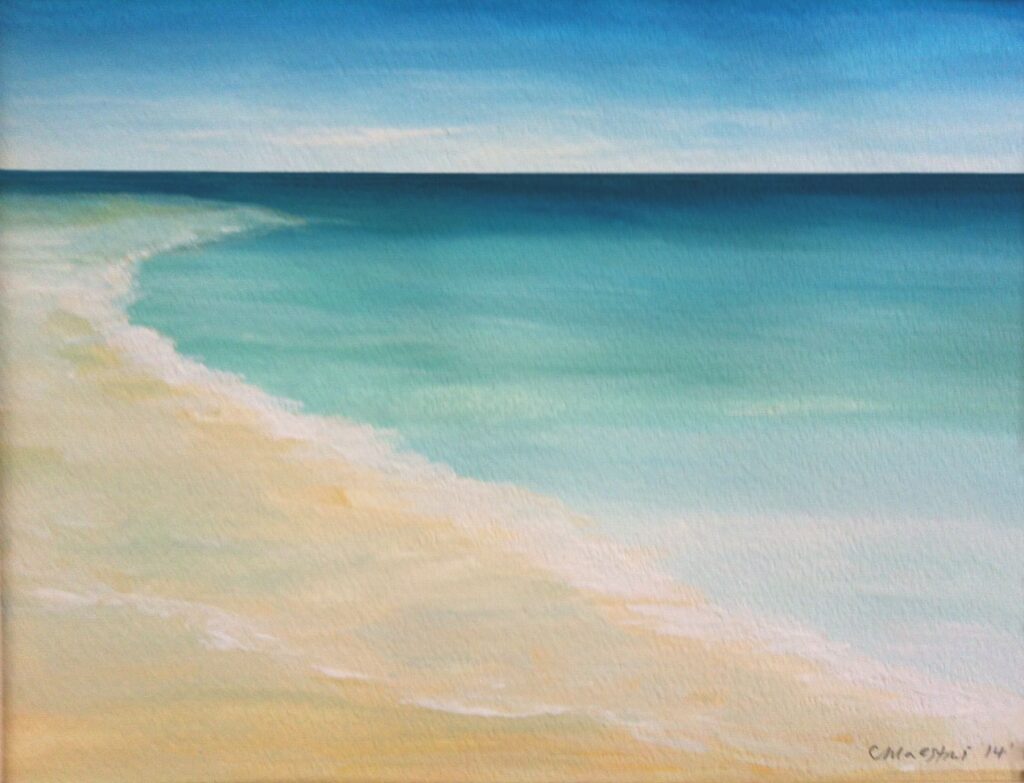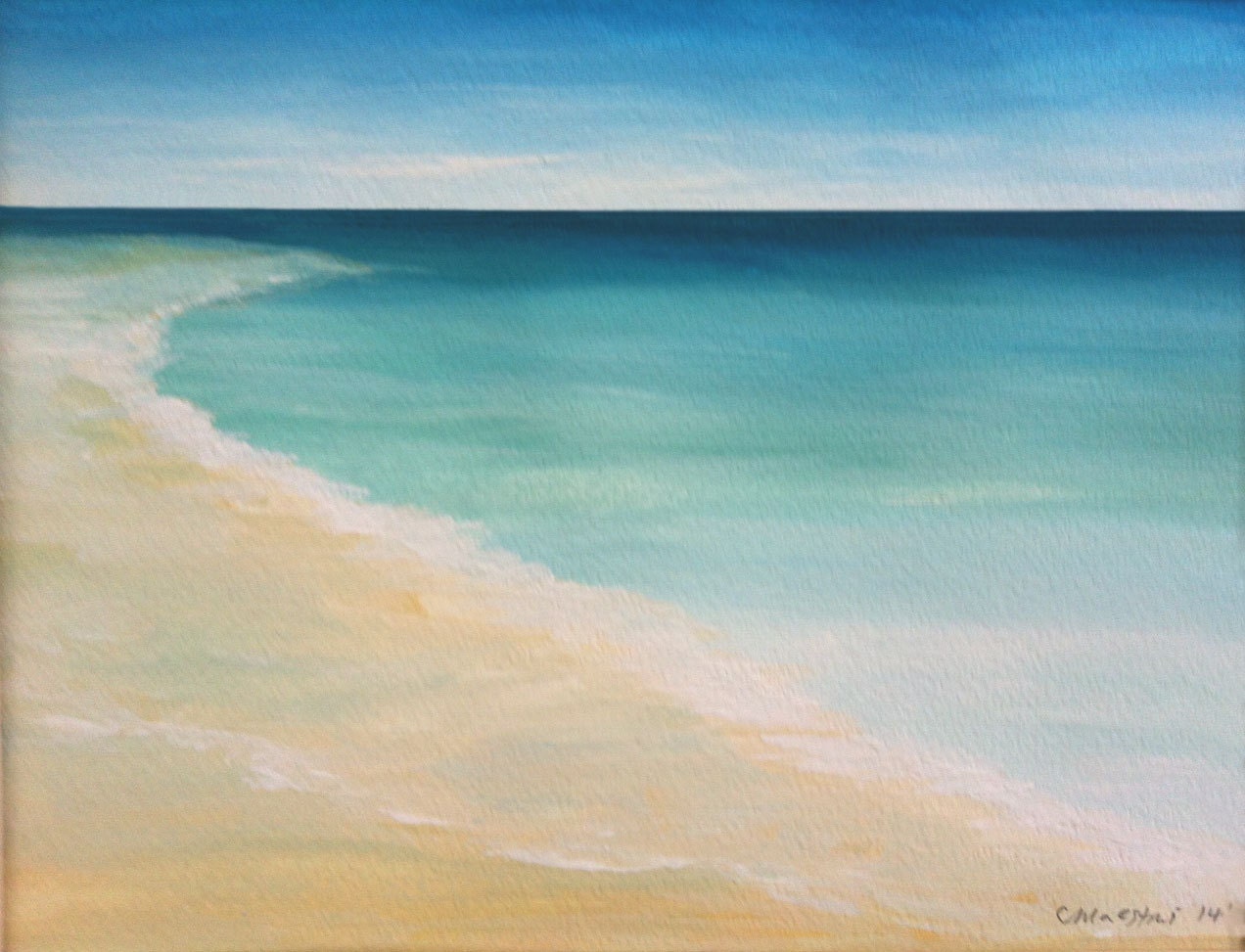
Capturing Coastal Serenity: The Enduring Appeal of Beach Landscape Painting
Beach landscape painting has captivated artists and art enthusiasts for centuries. The allure of the ocean, the rhythmic crashing of waves, the soft hues of sand, and the vast expanse of the sky combine to create scenes of unparalleled beauty. This article explores the history, techniques, and enduring appeal of beach landscape painting, examining why these artistic representations continue to resonate with audiences worldwide. From impressionistic interpretations to realistic depictions, beach landscape painting offers a diverse range of styles and perspectives on the coastal environment.
A Brief History of Beach Landscape Painting
The depiction of beaches in art can be traced back to ancient times, though formal beach landscape painting as a distinct genre emerged later. Early examples often featured coastal scenes as backdrops for historical or mythological narratives. However, as artistic styles evolved, the beach itself became the primary subject.
The Rise of Impressionism
The Impressionist movement in the 19th century played a pivotal role in popularizing beach landscape painting. Artists like Claude Monet, Pierre-Auguste Renoir, and Eugène Boudin were drawn to the ever-changing light and atmosphere of the coast. They sought to capture fleeting moments and sensory experiences, using loose brushstrokes and vibrant colors to convey the essence of the beach. Monet’s series of paintings depicting the beaches of Normandy are prime examples of this era’s influence.
Post-Impressionism and Beyond
Following the Impressionists, artists like Paul Cézanne and Vincent van Gogh continued to explore the coastal landscape, albeit with their own distinct styles. Cézanne focused on the underlying structure and geometric forms of the natural world, while Van Gogh infused his beach scenes with intense emotion and expressive brushwork. The 20th and 21st centuries have seen a continued evolution of beach landscape painting, with artists experimenting with various media, techniques, and conceptual approaches. [See also: Abstract Seascape Art]
Techniques in Beach Landscape Painting
Creating a compelling beach landscape painting requires a mastery of various techniques. Artists must be able to accurately represent the textures of sand, water, and sky, as well as the effects of light and shadow. Here are some common techniques used in beach landscape painting:
- Underpainting: Establishing a base layer of color to create depth and atmosphere.
- Layering: Building up layers of paint to achieve rich textures and subtle color variations.
- Blending: Smoothly transitioning between colors to create a sense of realism.
- Dry Brushing: Using a dry brush to create textured effects, particularly for sand and rocks.
- Glazing: Applying thin, transparent layers of paint to modify the colors and values of underlying layers.
- Impasto: Applying paint thickly to create a textured surface.
Color Palette Considerations
The color palette used in a beach landscape painting is crucial for conveying the mood and atmosphere of the scene. Common colors include blues and greens for the ocean, yellows and browns for the sand, and a range of hues for the sky. Artists often use complementary colors, such as blue and orange, to create visual contrast and interest. The choice of colors can also reflect the time of day, weather conditions, and geographical location. A sunrise beach landscape painting, for example, might feature warm tones of red, orange, and yellow, while a painting of a stormy beach might incorporate darker blues, grays, and purples. The skillful use of color is essential for capturing the essence of the coastal environment in a beach landscape painting.
The Enduring Appeal of Beach Landscape Painting
The popularity of beach landscape painting stems from its ability to evoke a sense of peace, tranquility, and connection to nature. The beach is often associated with relaxation, recreation, and escape, making it a subject that resonates with a wide audience. Furthermore, beach landscape painting offers a timeless quality, capturing the beauty of the natural world in a way that transcends cultural and temporal boundaries. [See also: Coastal Art Decor Ideas]
Therapeutic Benefits
Viewing beach landscape painting can have therapeutic benefits, reducing stress and promoting a sense of well-being. Studies have shown that exposure to nature, even through art, can lower blood pressure, improve mood, and enhance cognitive function. The calming imagery of the beach can provide a visual escape from the stresses of daily life, offering a moment of respite and reflection. The repetitive patterns of waves, the vastness of the ocean, and the soft light of the sun can all contribute to a sense of relaxation and mindfulness. Owning a beach landscape painting can bring a piece of that tranquility into your home or office.
Collecting Beach Landscape Paintings
Collecting beach landscape paintings can be a rewarding experience, offering both aesthetic pleasure and potential investment value. When selecting a beach landscape painting, consider the artist’s style, technique, and reputation. Look for paintings that evoke a strong emotional response and that resonate with your personal taste. It is also important to consider the size, medium, and condition of the painting. Researching the artist’s background and exhibition history can help you assess the value and authenticity of the artwork. [See also: Investing in Art for Beginners]
Notable Beach Landscape Painters
Throughout history, numerous artists have made significant contributions to the genre of beach landscape painting. Here are a few notable examples:
- Claude Monet: Known for his Impressionistic depictions of the French coastline.
- Winslow Homer: An American painter famous for his seascapes and scenes of coastal life.
- Joaquin Sorolla: A Spanish painter celebrated for his vibrant and sun-drenched beach scenes.
- Frederick Church: Part of the Hudson River School, Church painted grand landscapes, including coastal scenes.
- Edward Hopper: While not exclusively a beach landscape painting artist, Hopper often incorporated coastal elements into his works, exploring themes of isolation and modernity.
Modern and Contemporary Artists
Contemporary artists continue to explore the possibilities of beach landscape painting, pushing the boundaries of the genre and incorporating new perspectives. Many contemporary beach landscape painting artists focus on environmental themes, using their art to raise awareness about the impact of climate change and pollution on coastal ecosystems. Others explore abstract or conceptual approaches, challenging traditional notions of representation. The diversity of styles and approaches in contemporary beach landscape painting reflects the ongoing evolution of the art form.
Conclusion: A Timeless Connection
Beach landscape painting remains a beloved genre, offering a timeless connection to the beauty and power of the ocean. Whether through realistic depictions or impressionistic interpretations, these paintings capture the essence of the coastal environment, evoking a sense of peace, tranquility, and wonder. As long as the ocean continues to inspire, beach landscape painting will continue to thrive, providing artists and art enthusiasts with a source of endless fascination and inspiration. The enduring appeal of beach landscape painting lies in its ability to transport us to another place, to remind us of the beauty of the natural world, and to offer a moment of respite from the stresses of modern life. The gentle waves, the warm sand, and the vast sky, captured in paint, continue to speak to the human spirit.

